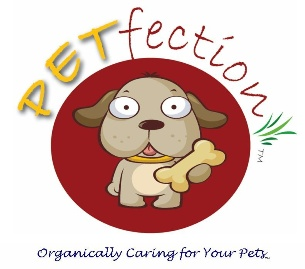Perfecting the PAWdicure January 31 2025
Your dog's paws withstand a lot. The paw pads act as a cushion for the body weight the dog carries around, and also helps protect the delicate bones and joints within. There are actually three different kinds of pads on a dogs paw. The first are the "toe pads" called Digital Pads. They help act as shock absorbers while the dog is running or walking on different terrains. The second pad is the large pad, and is called the Metacarpal Pad. This is the main pad that becomes super rough and thick on dogs who are outside on harder terrains or more unstable terrains. The third pad is the one going up the back of the leg... almost what you'd think of to be the "heal" if the dog put its whole foot down on the ground. This pad is called Carpal Pad. The carpal pad is used to gain traction when stopping or doing downhill.

On top of the digital pads are the claws. Claws and Nails tend to be used interchangeably, but according to Wikipedia, a claw is for catching and holding prey, for digging, climbing, self defense and grooming. While a nail is more of a rounded, protective piece at the top of the finger or toe. Both are made of the protein keratin, which is what we care about for this post!
This post is going to teach you how to perform the perfect "Pawdicure" on your dog. Not only can treating your dog to a paw massage and nail oil treatment (or should we say "claw oil treatment") be a relaxing event for your pooch, but it allows you to inspect and stay on top of their paw health.
Now before you can give a perfect pawdicure, you need to have the right supplies on hand! You'll need our Paw Cream, our Nail Oil, a towel, a cup of lukewarm water, and nail clippers or dremel. You want your dog to lay or sit in their favorite area and be as comfortable as possible, so if this means up on a couch or bed, you may want to wash their paws first in another area before letting them get snuggled in.
You can purchase our Pawdicure Set ready to go in this cute little box. They even make a great gift!
Ok on to the steps!
Step 1: Dip each of your dog's paws into the cup of lukewarm water and dry them off on the towel. If your dog likes having their paws wet, feel free to let each paw soak a bit before removing. If your dog's paws are quite dirty, you will have get fresh water for each paw or have multiple cups ready to go.
Step 2: After your dog has freshly washed paws, clip or dremel their nails if they'll allow you. If this part stresses them out, feel free to skip it.
Step 3: Give your dog a chance to relax. Grab your Paw Cream and let the massage begin! Scoop out a little cream, and apply to all the pads on the paw. While gently talking to your dog, or playing soft music, massage the cream in a circular motion across each pad. Make sure to get up around the sides of the pad too and all the extra dry or rough spots. If your dog is groaning, sighing, or stretching open their toes, they are loving their paw massage so feel free to rub some cream and massage up in between the toes and in between the pads on the fur feeling those little tendons. Work your way up the leg to the last carpal pad. This pad may not need as much attention since it isn't used daily, but it still deserves some attention. Note, if your dog is trying to lick your hand or their paw during this massage, you can apply some cream to the top of another paw or a spot on their leg to lick while you are massaging. Paw Cream is made with natural and organic ingredients, is non-toxic, chemical free, and safe if licked!
Step 4: After you are done with the cream and massage, reach for the Nail Oil. This oil is also made of natural and organic ingredients, is non-toxic, chemical free, and safe to lick. Take and brush the oil onto each nail paying attention for any chipped, split, or cracked toe nails. This oil not only moisturizes the nail, but will help heal up chips, splits or cracks strengthening the nail and helping block out infection.
Step 5: After you have completed each paw, each pad, and each nail, pat yourself on the back for giving your dog a full pampering pawdicure! They will be over the top in love with how good they feel mentally and physically. A job well done.
Step 6: You can give your dog pawdicures on a regular basis. Some dogs will need them year round, and others will only need them during certain seasons. Keep an eye on their paws and pull out your supplies as needed.



You can read more fun dog paw facts here. Also be sure to check out our other posts on how to take proper care of the paws during the summer and the winter!


